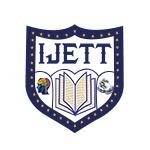Marigold Flower Disease Prediction through Deep Neural Network with Multimodal Image
How to Cite?
Sumitra Nuanmeesri, Shutchapol Chopvitayakun, Preedawon Kadmateekarun, Lap Poomhiran, "Marigold Flower Disease Prediction through Deep Neural Network with Multimodal Image," International Journal of Engineering Trends and Technology, vol. 69, no. 7, pp. 174-180, 2021. Crossref, https://doi.org/10.14445/22315381/IJETT-V69I7P224
Abstract
This research aims to develop the convolutional neural network model to predict the marigold flower disease through multimodal image processing. The marigold flower was detected on the image dataset by applying the Fast Approximate Nearest neighbor Search Algorithm, centroids, and GrabCut algorithm. The image segmentation with the watershed and hue saturation value techniques were used to process the image dataset for the neural network modeling. The result showed that the developed model with the watershed dataset has the highest efficiency. The model gave the validation accuracy of 88.03%, the validation loss of 4.21%, and the accuracy of the model testing was 91.67%. Therefore, it could be said that image segmentation processing could optimize flower disease image classification in deep neural networks.
Keywords
Deep Neural Network, Marigold, Multimodal image.
Reference
[1] N. Ponkiya, S. Desai, J. Mistry, S. Patel, and R. Ingalhalli., Development of economical mosquito repellent using marigold plant, International Journal for Research Trends and Innovation, 3(11)(2018), 47–54.
[2] L. C. Coelho, A. R. R. Bastos, P. J. Pinho, G. A. Souza, J. G. Carvalho, V. A. T. Coelho, L. C. A. Oliveira, R. R. Domingues, and V. Faquin., Marigold (Tagetes erecta): The potential value in the phytoremediation of chromium,” Pedosphere, 27(3)(2017), 559–568.
[3] W. L. Hadden, R. H. Watkins, L. W. Levy, E. Regalado, D. M. Rivadeneira, R. B. van Breemen, and S. J. Schwartz., Carotenoid composition of marigold (Tagetes erecta) flower extract used as a nutritional supplement, Journal of Agricultural and Food Chemistry, 47(10)(1999) 4189–4194.
[4] H. Samsudin, H. S.-Valdez, R. Auras., Poly(lactic acid) film incorporated with marigold flower extract (Tagetes erecta) intended for fatty-food application, Food Control, 46(2014) 55–66.
[5] H. Liu, Y. Wang, C. Liang, Q. Yang, S. Wang, B. Wang, F. Zhang, L. Zhang, H. Cheng, S. Song, and L. Zhang., Utilization of marigold (Tagetes erecta) flower fermentation wastewater as a fertilizer and its effect on microbial community structure in maize rhizosphere and non-rhizosphere soil, Biotechnology & Biotechnological Equipment, 34(1)(2020) 522–531.
[6] J. McMaugh, What garden pest or disease is that? Sydney: New Holland Publishing, (2001).
[7] M. Siddiqi, I. Ahmad, and S. Sulaiman., Weed recognition based on erosion and dilation segmentation algorithm, in Proc. International Conference on Education Technology and Computer, (2009) 224–228.
[8] J. Bossu, Ch. Gee, G. Jones, and F. Trechetet., Wavelet transform to discriminate between crop and weed in perspective agronomic images,” Computers and Electronics in Agriculture, 65(1)(2009) 133–143.
[9] R. Indrakumari, T. Poongodi, S. Khaitan, S. Sagar, and B. Balamurugan., A review on plant diseases recognition through deep learning,” in Handbook of Deep Learning in Biomedical Engineering, V. E. Balas, B. K. Mishra, R. Kumar, Eds., Massachusetts, USA: Academic Press, 8(2021), 219–244.
[10] M. Sibiya and M. Sumbwanyambe., A computational procedure for the recognition and classification of maize leaf diseases out of healthy leaves using convolutional neural networks,” AgriEngineering, 1(2019), 19–131.
[11] K. Zhang, Q. Wu, A. Liu, and X. Meng., Can deep learning identify tomato leaf disease?, Advances in Multimedia, (2018),6710865.
[12] J. Amara, B. Bouaziz, and A. Algergawy., A deep learning-based approach for banana leaf diseases classification, in Proc. Datenbanksysteme für Business, Technologie und Web (BTW 2017) – Workshopband, B. Mitschang, D. Nicklas, F. Leymann, H. Schöning, M. Herschel, J. Teubner, T. Härder, O. Kopp, M. Wieland, Eds., (2017),79–88.
[13] K. P. Ferentinos., Deep learning models for plant disease detection and diagnosis, Computers and Electronics in Agriculture, 145(2018) 311–318.
[14] D. A. Suju and H. Jose., FLANN: Fast approximate nearest neighbor search algorithm for elucidating human-wildlife conflicts in forest areas, in Proc. 2017 Fourth International Conference on Signal Processing, Communiction and Networking, (2017) 1–6.
[15] R. Deakin, S. C. Bird, and R. Grenfell., The Centroid? Where would you like it to be?, Cartography, 31(2002) 153–167.
[16] G. Rother, V. Kolmogorov, and A. Blake., GrabCut: Interactive foreground extraction using iterated graph cuts, in Proc. ACM SIGGRAPH 2004 Papers, (2004) 309–314.
[17] Q. Chen, X. Yang, and E. M. Petriu., Watershed segmentation for binary images with different distance transforms, in Proc. 3rd IEEE International Workshop on Haptic, Audio and Visual Environments and Their Applications, (2004) 110–116.
[18] T. A. Aris, A. Nasir, and W. Mustafa., Analysis of distance transform for watershed segmentation on chronic leukaemia images, Journal of Telecommunication, Electronic and Computer Engineering, 10(2018) 51–56.
[19] K. Simonyan and A. Zisserman., Very deep convolutional networks for large-scale image recognition, arXiv preprint, arXiv:1409.1556 (2015).
[20] N. Srivastava, G. Hinton, A. Krizhevsky, I. Sutskever, and R. Salakhutdinov., Dropout: A simple way to prevent neural networks from overfitting, Journal of Machine Learning Research, 15(2014) 1929–1958.
[21] Y. Ho and S. Wookey., The real-world-weight cross-entropy loss function: Modeling the costs of mislabeling, IEEE Access, 8(2020) 4806–4813.
[22] S. Nuanmeesri., Development of community tourism enhancement in emerging cities using gamification and adaptive tourism recommendation, Journal of King Saud University - Computer and Information Sciences, (in press), ( 2021).
[23] D. M. W. Powers., Evaluation: From precision, recall and Fmeasure to ROC, informedness, markedness &correlation,” Journal of Machine Learning Technologies, 2(2011) 37–63.
[24] S. Nuanmeesri and W. Sriurai., Thai water buffalo disease analysis with the application of feature selection technique and Multi-Layer Perceptron Neural Network., Engineering, Technology & Applied Science Research, 11(2)(2021) 6907–6911.
[25] R. Trevethan., Sensitivity, specificity, and predictive values: Foundations, pliabilities, and pitfalls in research and practice, Frontiers in Public Health, 5(2017) 307.



